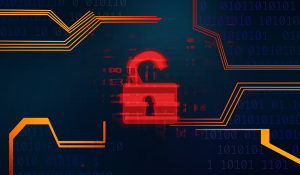10 Strategies to Protect Against Malware Attacks
The threat of malware looms large. From viruses and worms to ransomware and spyware, malicious software poses a significant risk to individuals,...
9 min read
 DriveLock
Sep 25, 2023 11:31:08 AM
DriveLock
Sep 25, 2023 11:31:08 AM

In the vast landscape of cybersecurity threats, few adversaries have proven as cunning and adaptable as the Trojan horse virus. Like its namesake from ancient Greek mythology, the Trojan horse virus disguises its malicious intent, often infiltrating organizations' digital fortresses unnoticed.
Once inside, the attackers can execute various malicious activities, such as stealing data, deleting files, or gaining unauthorized control over the system.
| TABLE OF CONTENT |
We'll explore what these covert cyber threats are, how they work, and, most importantly, what proactive steps organizations can take to safeguard their digital assets. Join us on this journey through the labyrinthine realm of Trojans and discover the keys to fortifying your organization's defences against these stealthy adversaries.
A Trojan Horse Virus, commonly referred to as a "Trojan," is a type of malicious software (malware) that disguises itself as a legitimate or benign program or file while hiding its harmful intent. This deceptive characteristic is analogous to the ancient Greek story of the Trojan Horse, in which a seemingly harmless wooden horse was used to infiltrate the city of Troy, leading to its downfall.
Once infiltrated into a network, cyber attackers gain the ability to execute virtually any action that a legitimate user could perform. This includes actions like exporting files, altering data, deleting files, or making other unauthorized changes to the device's content.
Trojans are frequently hidden within downloads for various items such as games, tools, applications, and even software updates. Many Trojan attacks also rely on social engineering techniques, spoofing, and phishing to manipulate users into taking the desired actions.
The history of Trojan Horse viruses, often referred to as Trojans, traces back to the early days of computer malware development. Here's an overview of their evolution:
Early Days (1970s - 1980s): The concept of a Trojan Horse predates the internet era. In the 1970s and 1980s, when personal computers were emerging, early versions of Trojans were used to trick users into running seemingly harmless programs that would then perform malicious actions, such as displaying a humorous message or altering system settings.
1980s - 1990s PC Infections: As personal computers became more widespread in the 1980s and 1990s, Trojans evolved into a form of malware capable of causing significant harm. One notable Trojan from this era was the "AIDS Trojan" in 1989, which claimed to be an AIDS information program but encrypted the user's hard drive and demanded a "ransom" for the decryption key.
Remote Access Trojans (RATs): In the late 1990s and early 2000s, a new breed of Trojans known as Remote Access Trojans (RATs) emerged. RATs allowed attackers to gain remote control of infected computers, opening the door to various forms of cybercrime, including espionage and data theft.
Password Stealers and Banking Trojans: Around the same time, Trojans became increasingly focused on stealing sensitive information. Banking Trojans like ZeuS and SpyEye emerged, targeting online banking credentials and financial information and were responsible for significant financial losses.
Advanced Persistent Threats (APTs): In the 2000s, nation-states and advanced cybercriminal groups began using Trojans in targeted attacks known as Advanced Persistent Threats (APTs). APTs like Stuxnet and Flame demonstrated the sophistication and complexity of Trojans, often combining multiple vulnerabilities and zero-day exploits to infiltrate high-value targets.
Ransomware Trojans: In the mid-2010s, Trojans took on a new role as the delivery mechanism for ransomware. Ransomware Trojans like CryptoLocker and WannaCry encrypted user files, demanding a ransom for decryption keys. These attacks caused widespread disruption and financial losses.
Modern Trojans (Present): Today, Trojans continue to be a prevalent and evolving threat. They are often distributed through email attachments, malicious websites, and software downloads, with attackers using increasingly sophisticated social engineering techniques to trick users into executing them. Modern Trojans can steal a wide range of sensitive data, compromise systems, and serve as entry points for further attacks.
Throughout their history, Trojans have played a pivotal role in the evolution of cybersecurity threats. They have become more sophisticated, capable, and elusive, posing a continuous challenge to individuals, organizations, and cybersecurity professionals worldwide. As a result, defending against Trojans remains a critical aspect of modern cybersecurity efforts.
Trojan Horse viruses, commonly referred to as Trojans, come in various forms, each with distinct characteristics and purposes. Here are some different types of Trojans, along with descriptions of their functions:
1. Backdoor Trojans:
2. Downloader Trojans:
3. Banking Trojans:
4. Spyware Trojans:
5. Ransomware Trojans:
6. Remote Access Trojans (RATs):
7. Distributed Denial of Service (DDoS) Trojans:
8. FakeAV Trojans (Fake Antivirus):
9. Password Stealers (Password Trojans):
10. Fileless Trojans:
Trojans continue to evolve and adapt, making them a persistent and versatile threat in the cybersecurity landscape. Effective security practices, such as regularly updating software, using strong passwords, and employing reputable antivirus solutions, are essential to defend against these malicious programs.
NetWire: is a RAT that grants attackers remote control over compromised systems, allowing them to execute various commands and steal sensitive data. It has been used in cyber espionage campaigns and criminal activities.
These examples illustrate the diversity of Trojan Horse viruses and their malicious capabilities. It's essential for users and organizations to maintain strong cybersecurity practices to protect against these threats.
A Trojan virus can have a devastating impact on organizations by compromising their cybersecurity and potentially causing significant harm. Here's an explanation of how a Trojan virus works within an organizational context:
1. Infiltration:
2. Payload Execution:
3. Backdoor Creation:
4. Data Theft and Espionage:
5. Remote Control:
6. Propagation:
7. Use as Part of a Botnet:
8. Payload Delivery:
9. Persistence:
10. Evading Detection:
Once a potential infection is identified, it's essential to follow established incident response procedures, isolate affected systems, and conduct a thorough investigation to mitigate the impact and prevent future occurrences. Regular employee training and a strong cybersecurity posture are crucial components of Trojan detection and prevention in organizations.
Preventing a Trojan virus attack in an organization requires a combination of cybersecurity measures, employee training, and best practices. Here are 22 steps organizations can take to minimize the risk of Trojan infections:
Install and Update Antivirus Software: Use reputable antivirus and anti-malware solutions on all endpoints, including servers and workstations. Keep them updated to ensure they can detect the latest threats.
Use a Firewall: Implement a robust firewall to filter incoming and outgoing network traffic. Configure it to block known malicious IP addresses and domains.
Patch and Update Software: Regularly apply security patches and updates to operating systems, applications, and software. Many Trojans exploit known vulnerabilities, so keeping systems up to date is crucial.
User Account Management: Enforce strong password policies and multi-factor authentication (MFA) for user accounts. Disable unnecessary or unused accounts to reduce potential attack vectors.
Email Security: Implement email filtering and anti-phishing solutions to prevent malicious attachments and links from reaching user inboxes.
Web Security: Use web filtering and content inspection tools to block access to malicious websites and restrict downloads of suspicious files.
Network Segmentation: Segment the network to isolate critical systems and sensitive data. This can limit the lateral movement of Trojans within the network.
Least Privilege Principle: Limit user and system privileges to the minimum necessary for their respective roles. This reduces the impact of a potential infection.
Employee Training: Conduct regular cybersecurity training and awareness programs for employees. Teach them how to recognize phishing emails and the dangers of downloading files from untrusted sources.
Email and Attachment Filtering: Use email gateways that filter attachments for malicious content. Educate employees not to open email attachments from unknown or suspicious sources.
Endpoint Security: Deploy endpoint security solutions that offer advanced threat detection, behavioral analysis, and real-time monitoring of system and network activities.
Network Monitoring and Intrusion Detection: Implement network monitoring and intrusion detection systems (NIDS/IDS) to identify and respond to suspicious network activity promptly.
Application Whitelisting: Implement application whitelisting to allow only authorized and trusted applications to run on organization-owned devices.
Regular Backups: Maintain regular backups of critical data and systems. Ensure backups are stored securely and regularly tested for reliability.
Incident Response Plan: Develop and regularly update an incident response plan that outlines steps to follow in case of a Trojan infection. Test the plan through tabletop exercises.
Mobile Device Management (MDM): If employees use mobile devices for work, implement MDM solutions to enforce security policies and remote device management.
Access Control Lists (ACLs): Use ACLs to restrict network traffic and access to specific resources, limiting the attack surface for potential Trojans.
Regular Security Audits: Conduct security audits and vulnerability assessments to identify and address potential weaknesses in the organization's infrastructure.
Secure Remote Access: If remote access is required, use secure virtual private networks (VPNs) with strong authentication methods
Network Isolation: Segment the network into isolated zones to contain potential infections and prevent lateral movement within the network.
Security Information and Event Management (SIEM): Implement SIEM systems to centralize and analyze security event data, enabling faster detection of suspicious activities.
Continuous Monitoring: Continuously monitor systems and networks for signs of intrusion, unusual behavior, or security incidents.
In conclusion, the Trojan horse virus remains a persistent and ever-evolving threat in the realm of cybersecurity. Organizations must recognize that no system is entirely immune, but by implementing robust security measures and fostering a culture of cyber-awareness, they can significantly reduce their vulnerability to Trojan attacks.
You can fortify your organization's defenses against the Trojan horse and the ever-evolving landscape of cyber threats. Stay safe, stay secure, and never underestimate the value of preparedness in the face of today's digital challenges.

The threat of malware looms large. From viruses and worms to ransomware and spyware, malicious software poses a significant risk to individuals,...

Among the numerous cyber threats lurking on the horizon, phishing attacks have emerged as a formidable adversary. Like a stealthy predator, these...

In this relentless digital battlefield, businesses and organizations are pitted against a multitude of adversaries ranging from individual hackers...